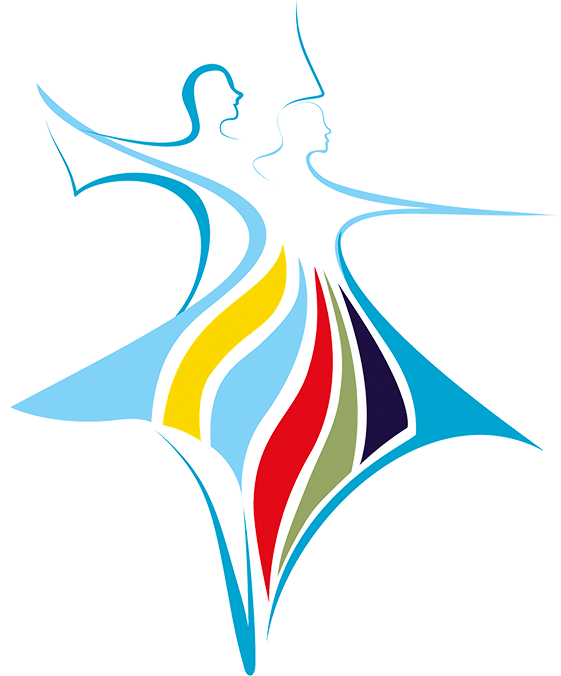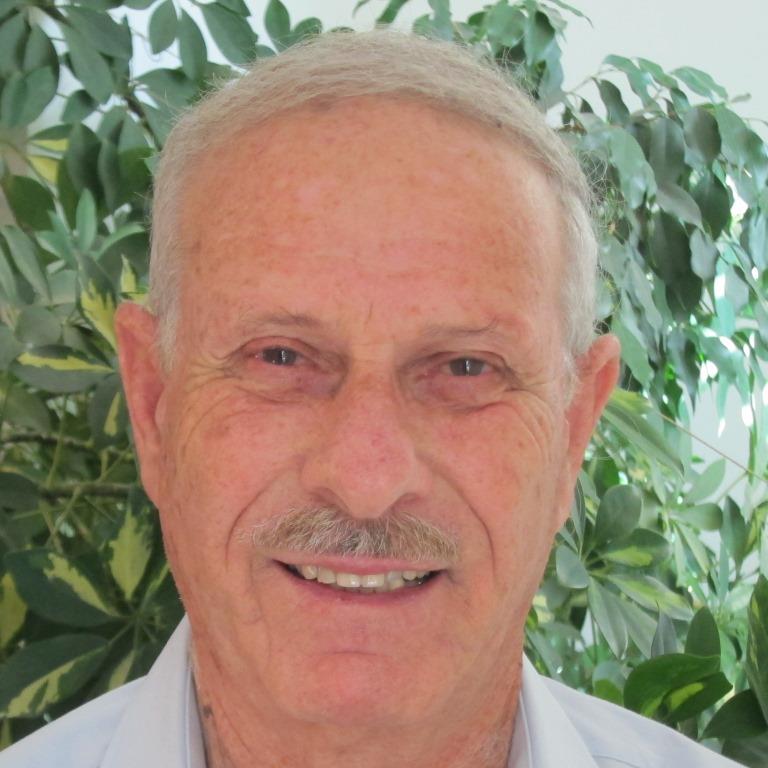- Home
- Rokdim Nirkoda 111
- The Mother of all Loves – The Love of Dance
When I was 16 years old, I had already performed on several theater stages the Land of Israel. I was a student of the legendary Gertrud Kraus and was connected with Leah Bergstein from Ramat Yohanan which brought me front stage at a young age.
My talent as a dancer also led to the discovery and practice of another talent – choreography. As a 16-year old girl I was sent by the “Folk Dance Section” to kibbutzim to teach and prepare dance performances for the stage. I was also sent on behalf of the youth movement, “Machanot Ha’Olim” [“Immigrant (Newcomers) Camp”], which is how I came to the kibbutzim of Hashomer Hatzair and others.
One of the kibbutzim that I remember well is Ein Shemer where I used to dance quite a lot during the holidays. It was in 1944 when I initially came to the kibbutz that I encountered a highly motivated group of skilled and nice young kibbutz members with whom I prepared a stage performance for the “Chag Ha’Bikurim – First Fruits Holiday” and at other times for other occasions. I taught them the steps and dance technique and encouraged them by saying: “Get on stage, dance, enjoy and do good for your audience”.
The thunderous applause coming from the crowds testified to my successes and my contribution to the culture of these events. Sometimes the performances took place on a stage but now and then the stage was a sand field at the event venue.
From there, I proceeded to the neighboring kibbutz, “Ma’anit”, [in northern Israel, just south of the town of Pardes Hanna-Karkur], where I also prepared performances according to themes, holidays and their specific requests. The members of the kibbutz worked very hard and yet, after a day of work they were enthusiastic and happy to start dancing. Groups of children also participated in the dance performances, mainly on the weekends [Friday-Saturday] and at special kibbutz ceremonies where I worked. I can say that working in the settlements was a formative experience for me. I loved them, and I connected emotionally. Also, this is a Zionist ideology, and that’s how I really identified with them. Although I was young, my thinking and seeing the world was mature and I found a great common language with the pioneer achievers, the working people of those days 80 years ago.
I choreographed for many other meshekim (agricultural farms) as well as at Beit Ha’am in Tel Aviv and throughout my life, I created many dance works in many places, for many diverse audiences.
This monologue of Tova Tzimbel-Neta was in essence the summary of an interview conducted with her at her home in Tel Aviv with the participation of Yaron Meishar in the presence of her daughter Ronit, who had come from Australia just a few weeks prior to the interview, to assist her 96 -year old mother.
While sitting in her cushioned, comfortable chair, lively and enthusiastic for this interview, Tova went through her pictures in photo albums scattered on the table, and then said: “I see photographs of a beautiful, shapely young girl dancing with her lehakot (dance troupes) from decades of dance in Israel and abroad. For about two hours, Tova, her eyes sparkling, spoke fluently and eloquently reminiscing and even revealing an astounding memory of names, dates and events from her 96 years of life. It seemed that soon she would get up on her feet for another dance from her vast repertoire, which includes the folk dance, “Lech Lech Lamidbar” that is still danced to this day in dance sessions throughout Israel. [The lyrics encouraged our youth to enliven our beautiful desert, the “Negev”.] However, this time she was content with a verbal review of her history.
Tova was born in the Nordia neighborhood of Tel Aviv, a neighborhood of shacks where Dizengoff Center is today. “After the strong earthquake in 1927, my mother was hurriedly brought to Hadassah Hospital where I was delivered. As a child I liked to climb the sycamore trees that even then, gave me the feeling of being a free-spirited bird. Tel Aviv is my great love and the object of my longing from anywhere in the world I’ve visited.
I remember my Bograshov kindergarten teacher, Shoshana. I also remember my grandfather
who used to take me from the kindergarten on the way to his grain store. We called the lollipop ‘beeswax candy’ because of its honey taste.”
At the Tel Nordau school where she studied, Tova characterized herself: “I was quite wild. All I wanted to do was to dance. When my parents realized that, they sent me to a dance teacher named Danya. Soon Danya realized how talented she was. When the great choreographer, Gertrud Kraus came to Israel, Tova was sent to her to be tested. Gertrud’s comment after the test was: “She is very talented.” After that Tova continued to dance with both the kind, beloved Danya and the tough, demanding Kraus. Due to the necessity of the circumstances, she stayed with Gertrud to continue her professional career.
Already by the age of 14, in the youth movement, she created a choreography about the Vienna Uprising with a section on Ezekiel’s “Vision of the Dry Bones”, where she also performed as a dancer. It was a great success and it was even praised by Gertrud Kraus who happened to be present at the show. When Tova was 15 years old, Kraus asked her to replace her choreographing for the 25th anniversary event for the Nahalal settlement. There, Tova choreographed “Machol Ro’im – Shepherds Dance”, with 15 young men, which was also presented at the Dalia Dance Conference and received a nationwide response. This dance was also performed at the 1947 Youth Festival in Czechoslovakia, in addition to her piece, “Hora Adama”. This piece had been presented earlier in Kibbutz Ein Shemer as part of the play, “Ve’Gar Falach Im Keves – And the Farmer Lives with the Lamb”.
Tova explains:
My dances were artistic holiday dances intended for the stage, as opposed to folk dances, which were intended for the Dalia Conference. Rivka Sturman wrote in the popular paper, “Davar”:
“Tova’s dances are not folk dances, they are spectacular performance dances.” And indeed, spectacular and artistic with significance and of a folk technique of dance. Many folk dances were based on my steps and motifs. I had an original dance language, I created something out of nothing.
In her biography, Tova tells us about her life during the British Mandate. On one trip, together with opera singers, they encountered a military curfew and they had to flee for shelter, while the British were shooting into the air. Yaffa Yarkoni, [the famous singer], ran with her to the home of Aryeh Spielberg, the violinist of the orchestra, until the curfew ended on “The Night of Bracha Fuld” [see: https://www.palmach.org.il/en/history/database/?itemId=6046].
About her husband, Uri, Tova says that he was an officer in the northern area on Black Friday when a British soldier approached him and stabbed him in the chest with the bayonet of a rifle into the left lung. He was treated in a hospital and then transferred to Atlit, along with others who were wounded.
During that period, Tova worked in two Hashomer Hatzair kibbutzim, Ein Shemer and Ma’anit. There they called her, “The young girl from the gush” (the triangle). There she prepared a performance in for the 25th anniversary of Kfar Yehezkel.
The writer, Rivka Gurfein, from Ein Shemer [As a son of Ein Shemer, I remember her as my mother, Hannah’s best friend – D.B.A.] wrote as follows:
“This is the young girl from the Gertrud Kraus Lehaka, Tova Tzimbel, who did much for us. Every region of the country had already acquired its own dance instructor. Tova belonged to our group. Between performances of the group she performed with, she managed to lead dancing for our young people and even for our children.
Declaration of Independence
Tova describes the historical time:
“The Rikud Ha’Agalon – Wagon Dance performance in Kfar Yehezkel took place precisely on the same evening that the United Nations declared the establishment of the State of Israel. A big radio was put up and we all listened intently. Immediately after Argentina’s ‘yes’ announcement, there was an outburst of enthusiastic applause with a standing ovation. Ron Aldema was the accordionist and I took the microphone to lead the audience around the seats in a procession of joy. We, the dancers, were at the head followed by all the members of the Moshav”.
During this period, Tova worked in Magdiel with youth holocaust survivors who had undergone severe trauma, and most of whom had no family. Tova writes: “It was a profound experience for me.”
Another story from the battlefield:
“There was an organization of artists to entertain soldiers on the front lines in the south. We spread out a tarp as a stage, the heat burned our feet, and with the first sounds of the accordion, the Egyptians launched a shell attack, which for some reason stopped as soon as our show stopped.”
In 1949, I performed at a festival in Venice with the Israeli Representative Dance Troupe led by Ze’ev Havatzelet. There was also a troupe of dancers from Franco’s Spain. We received a directive from Mapam in Israel not to perform in a place where a Spanish troupe was dancing. They split us up so that only one troupe could perform at the festival, and so, at the last minute, I organized a small troupe which was very successful.
In 1951 a big celebration of the Moshavim (settlements) of the Galilee took place, directed by Moshe Halevi (not Moshiko). A dramatic play, “Bat Yiftach” (Yiftach’s daughter”), written by Yigal Mossinson, was presented. Tova did the choreography and she received a lot of compliments from Yigal as well as headlines in the press. That same year, she also participated in the 50th anniversary celebration for “Keren HaKayemet (Jewish National Fund). One year later she prepared Zichron Yaakov’s “Wine Festival”. One hundred boys and girls participated. At that celebration she was excited to have the honor to meet and receive compliments from the Prime Minister of Israel, David Ben-Gurion and his wife, Paula.
In 1955 and 1959 Tova prepared performances of the Israeli dance troupes for the Democratic Youth Festival which took place in Budapest and in Warsaw. At that time, after the ‘Shoah [Holocaust], the ambience was still somewhat anti-Semitic, and she even experienced an anti-Semitic incident. Thugs with clubs in their hands entered the auditorium while shouting loudly: “You will not be here”. Jews won’t be here”. The audience quickly vacated the hall. That same evening, a new performance was organized under their auspices and, as a result, it was a great success which gave us resounding publicity, respect and a lot of prizes.
Lehakat HaTzimbelim – The Tzimbelim Dance Company
In 1966, Tova founded Lehakat “HaRokdim” for folklore performances with dance roots and traditional culture of the various communities in Israel. In 1970, the name was changed to “Tzimbelim”, i.e., Tzimbel’s (Tova Tzimbel’s) Lehaka. [This is a a play on her name – the meaning of “tzimbelim” is “cymbals”.] For five years, the Lehaka performed at the ZOA House in Tel Aviv. Boaz Sharabi also participated as flutist and drummer. Their program included: an expression of the joy of youth, Mizrachi-Middle Eastern dances, Chassidic dances, Israeli holiday dances, around the campfire, the breakthrough (Straits of Tiran).
During the 1973 Yom Kippur war Tova’s husband, Uri, was enlisted in the army and was absent for many days. Her cousin, Gidon Tzimbel, was killed in the war in the North. Much earlier Uri, her husband participated in the training for an operation in Lebanon (which later became known as “The 23 soldiers tragedy”. Uri had been called to secure the kibbutz “Sdot Yam”. Luckily, he escaped the tragic disappearance of the boat with the 23 soldiers.
In the 1980s, composers Emanuel Zamir and Yosef Hadar collaborated with Tova. They brought her their melodies for her to choreograph and disseminate through her dances. And indeed, she then created dances that became known throughout the country: “El Ha’Ayin, Al Harim Ole Haboker, Bashvilim Ro’a Yorda, Adarim Kitru HaShoket, BeHemyat Todah …
At the same time, Tova founded another troupe of dancers, “Mecholelei Aviv – Spring Dancers” in Tel Aviv. It consisted of teenagers from Tel Aviv as well as students and soldiers. They performed in Germany and were even filmed for German television like other representative troupes from different countries. “We were very much appreciated there, and more than once, there were apologies from Germans for what had happened in the past – the history that we all know”, says Tova.
A Magnificent Inventory
In Tova’s book, “The Story of My Life,” she describes the many phases in her life in various fields. One can say that Tova’s life story is the story of the life of the country. It begins at the time of the British Mandate in 1944, and continues with the youth movements, the working settlements, Israel’s wars, representation abroad, cultural institutions in Israel, IDF – Tzahal, (the Israeli army) and the festivals throughout the world. 96 Years of history.
In order to illustrate in some way, the intensity of the work, here is a short “inventory”:
The Mikveh Israel ceremony. Performances at the Dalia Dance Conference – choreographies, costumes, everything. The “Shavuot” dance ball in Petah Tikva. The 10th anniversary celebrations of [Kibbutz] Hamadia. The celebrations of Maoz Haim. Performances of ancient folk dances at the Venice festival. The folklore performance at Habima. The festival in Warsaw. The Workers’ Council and Working Mothers Organization. Performance evenings as a donation for The Ilan Association. The dance group of the Headquarters of Information. The Ein Harod Regional Council. The Procession of the Child and the Flower in Ramat Gan. The 44th anniversary of the Histadrut. Folklore festival in Netanya. Chagigat Ginat HaGefen (Vineyard Celebration) in Haifa. May 1st (May Day) rallies in Ramle. The dance troupe Lehakat Mecholron in Kfar Saba. An evening of art at the Educational Board Office in Tel Aviv. An evening of song and dance in Holon. Hawaii Nights in Tel Aviv. Evening of song and dance in Haifa. The Independence Day Celebration in Karkur. The 40th year anniversary of Hapoel at Givatayim Stadium. Chanukah Ball at Beit Tzionei America (ZOA House). An evening devoted to the songs of Emanuel Zamir – a partial list.
In Tzahal (the Israeli Defense Forces) – a performance for the Military Industry. Performances in military camps all over the country. A participant of the Central Military Performing Troupe. Training of the Tzahal performing troupes. Ground crew training (for which I was awarded prizes on three occasions). Working with fifteen schools all over the country – courses and seminars for the schools. Choreography for the play “Six Wings to One” (Shesh Knafayim Le’echad”).
Czech Festival, Shepherd’s Dance, International Prize. Budapest Dance Festival “Hora Adama” (Alexander Po and Mordechai Zeira).
Working with the youth movements – the Olim (immigrant camps), the United Movement, the Working Youth (Hanoar Ha’Oved), the Scouts (Tzofim), Maccabi Tzair, Hashomer Hatzair.
Dance Troupes: Machol Ron, HaTzimbelim, HaMecholelim, Tzahalulei Aviv.
Kibbutzim and Moshavim: Ein Shemer, Lehavot Haviva, Ma’anit, Shefayim, Sdot Yam, Ma’agan Michael, Maoz Haim, Hamadia, Givat Brenner, Gezer, Givat Haim, Nahalal, Kfar Yehezkel, Kfar Vitkin, Beit Oved, Kfar Yehoshua, Zichron Ya’akov, Ein Harod, Tel Yosef, Mishmar Hasharon Beit Oren, Ruhama, and there are more.
So, yes, we have brought the story of the queen of the movement with her 96 years, for whom only the sky was the limit. This woman marveled with her talent, her personality, her endless ambitions; this woman enriched the culture of our country, the dance, with all its nuances and illusions, and its changing periods in our ever-changing country. It is fitting to honor Tova’s life’s work, and her tremendous contribution to the people of Israel, to the State of Israel.
We wish Tova longevity and good health.









Comments
התראות